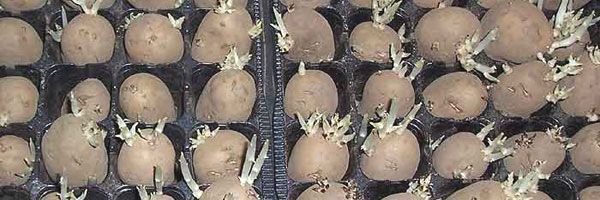
Sprouting disorders due to physiological age
The physiological changes of the tuber (incubation or physiological ageing) is an irreversible phenomenon which takes place in two stages.
The first stage, which begins immediately after the harvest, is a rest period during which the tuber is unable to sprout, even under ideal conditions. It is in a state of vegetative rest or deep (innate) dormancy.
The length of dormancy can vary according to the cultivar and conditions in the year of production. It may range from 17 to 40 weeks starting from tuber formation until the appearance of the first visible sprout (around 1 mm in length) on tubers stored in darkness immediately after the harvest, at 15°C with a relative humidity above 85%.
The second stage, sprouting, consists of three successive phases reflecting the degree of incubation of the seed tuber:
- phase I is characterised by slow growth and the emergence of a single sprout at the tip of the rose-end (apical dominance, photos 1 and 2); tubers showing this sort of sprouting are said to be low or under-incubated;
- phase II is characterised by the rapid growth of several sprouts (photos 3 and 4).
This is the physiological age at which the seed tuber’s growth is at its most vigorous; - phase III during which sprouting slows, is characterised by the formation of numerous very elongated sprouts (spindly sprouts, photos 5 to 7). At the end of this phase (fully incubated seed tuber), during which the development of numerous small sprouts per eye may also be observed (photo 8), premature daughter tuber formation can occur. This characterises the final stage of the physiological ageing of seed potatoes (photos 9 to 13).
The growth vigour of the plant (photo 14) is closely related to the physiological state of the mother tuber at the time of planting.





